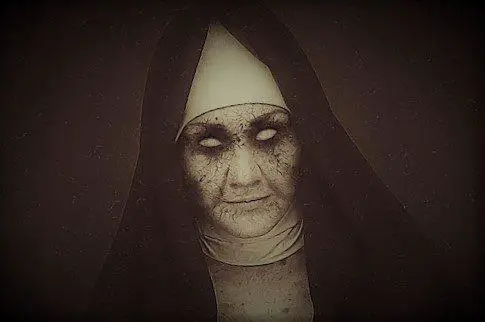Share the Lore!
By: Alex Postrado
Unraveling the Mystery Behind Exorcisms
Name one movie about exorcism.
Let me guess 一 was it William Friedkin’s 1973 horror film, The Exorcist?
Like it or not, it was this film that hordes of other exorcism films from recent years seem to have sprung from.
With the imagery of an innocent, young girl, “strapped to a bed, her head, turning 360 degrees as she vomits green sludge,” The Exorcist was able to win the big screen 一 and to some extent, even pop culture.
But real-life exorcisms are not necessarily what we see in movies.
And when it comes to the actual practice, its origin is far harder to pinpoint.
Ever wondered about where exorcism came from?
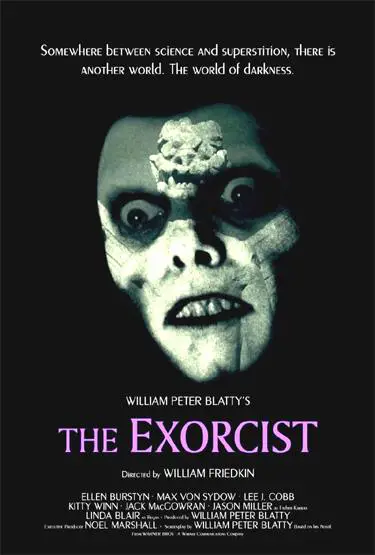
A Brief History of Exorcism
The first recorded use of the English word exorcism dates back to 1539. But, believe it or not, the practice itself spans centuries prior.
The word comes from Ancient Greek exorkizein, which directly translates to “to bind by oath“.
Interestingly enough, the practice has always been more about evicting “unwanted spirits“ rather than ‘tying’ them or gaining control over them. The process of casting out these spiritual entities largely depends on the belief and culture observed by the people 一 especially, the exorcist, or the person performing the exorcism.
In the ancient city of Babylon, for example, over 4,000 years ago, exorcisms were usually done “via a voodoo-like rite” by either their local priests or doctors. These personages were seen as the intermediaries between the mortal and the divine, and as such, they were believed to possess the ability and knowledge necessary to “combat evil“.
This idea of having something ‘evil’ at bay was a thing that ancient Persians shared with the Babylonians. They believed in entities called daevas. These daevas were demonic by nature 一 hence, when they try to possess humans, the ancient Persians perform their exorcism rituals, wielding their holy water, called apö zaöthra.
When the earliest form of Christianity emerged more than 2,000 years ago, exorcisms remained a thing. A central part of it was the use of the sign of the cross.
Over the next millennia, it was Christianity’s interpretation of exorcism that became the most dominant.
And as possessions began being tagged as “a disease of the soul” 一 particularly, during the Middle Ages 一 it was the pervading Christian faith that offered the ‘proper cure’:
Their version of an exorcism.
In other words, the exorcism most of us likely know of today.
But, despite Christianity, having the most influence on our modern understanding of the sacred practice, it did not necessarily mean that they had the ‘best exorcism ritual’.
There is virtually no way to conclude which version of exorcism deserves that title. And as records suggest, “techniques of exorcism vary across cultures”.
They could include the use of things, like sacred scriptures, prayers, ritual tablets, holy water, and sacrificial offerings, among others 一 all, with the goal of commanding the entity to leave the body of the possessed.
So, clearly, there is no ‘one, right way’ to perform exorcisms. And the more appropriate question would be:
What do exorcisms look like in different cultures?
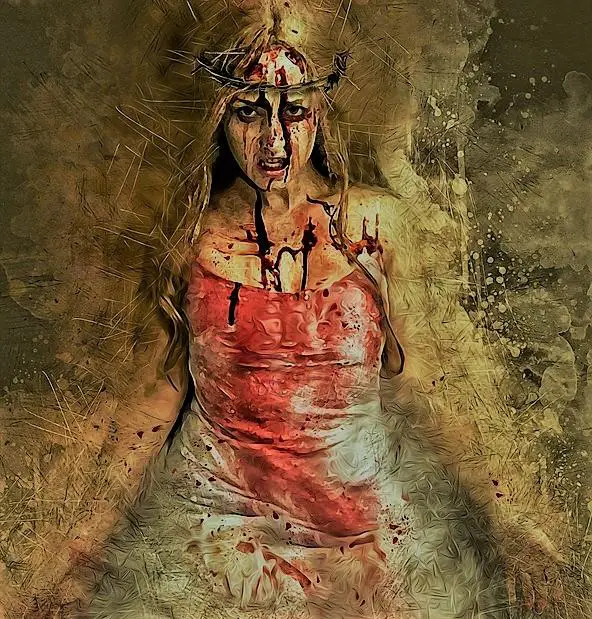
Defining Exorcism Across Cultures
Even in Christianity, exorcism already takes on different forms.
In Catholicism, it could either be:
- A formal rite that falls under the category of sacramentals, of which only ordained priests who expressly received the permission of a bishop can legally perform;
- Or a simple set of “prayers of deliverance” any layman can say.
In any case, this Catholic practice is always executed in the name of Jesus Christ. And the designated exorcist may make use of certain religious objects, like crosses, relics, icons, the Holy Rosary, and the Bible.
Similar to the Catholic exorcism rite, the Eastern Orthodox Church’s exorcism also implores the aid of God through the name of Jesus Christ.
Orthodox Christians believe that possessions are a way for the devil to rebel against God and enslave humanity 一 despite their belief that objects can also be possessed.
Protestant Christians, on the other hand, invoke the authority of the Trinity 一 the Father, Son, and Holy Spirit 一 when banishing demons.
In Lutheran Churches, these demons are cast out “with prayers and contempt“.
And they believe that there are three key signs someone is diabolically possessed, namely:
- When the person in question has knowledge of secret things;
- Knowledge of languages they never got to learn prior to the case;
- And supernatural strength.
These examples only touch on the surface as to what exorcism looks like in different Christian cultures. The list still goes on, and as we all know, the same can be said for exorcism in other religions.
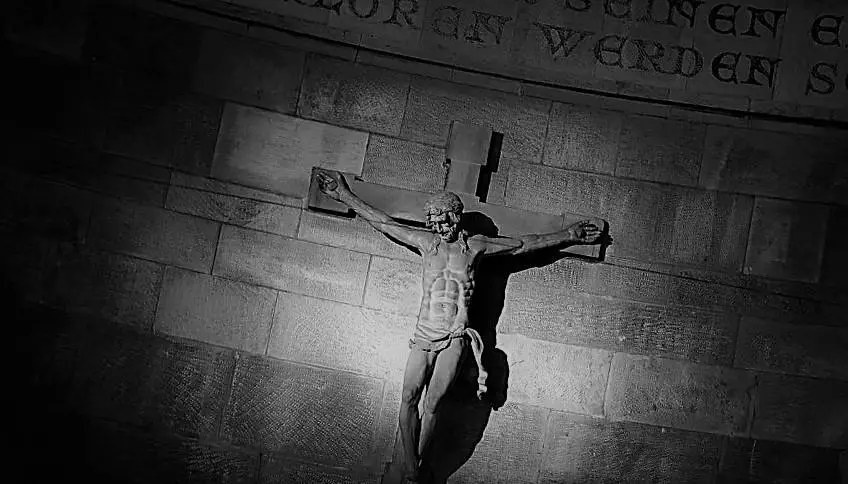
The Atharva Veda of Hinduism expounds on this topic by starting with the basics 一 A.K.A. defining what exorcism means to them.
They hold that exorcism is the rite performed in order to rid possessed individuals of ghostlike entities called bhuts or prets.
Hindu exorcists do this by repeating a mantra 一 or a sacred chant 一 and leaving a yajna 一 or a ritual offering.
In Islam, exorcism is called ruqya and it can be further categorized into:
- The “expulsion of the demon or the spirit”;
- The “treatment”;
- And the “curing of the possessed”.
The people assigned to do the exorcism in this culture are called raqi.
In Judaism, that revered role would be appointed to a rabbi, who would lead the exorcism ritual alongside a 10-man quorum of Jewish adults, called minyan.
Together, they would recite Psalm 91 three times, then the rabbi would blow a shofar 一 or a ram’s horn 一 to seal the separation of the human and the malicious entity.
Exorcisms in the Buddhist culture involve reading sutras 一 or canonical scriptures 一 and burning incense.
The exorcist 一 typically a chief priest 一 could also carry a shakujo 一 also known as “the pilgrim’s staff” 一 during the ritual to further drive spirits away with its “unearthly sound”.
For Taoist exorcists, the success of an exorcism may heavily be influenced by the use of a combination of chants, gestures, and Fulu 一 or, in simpler terms, painted talismans.
Are Exorcisms Real?
As significant as exorcism is in different cultures, it could still be quite difficult to imagine how the central part of it was actually reserved for a concept that is still widely debated today:
Possessions.
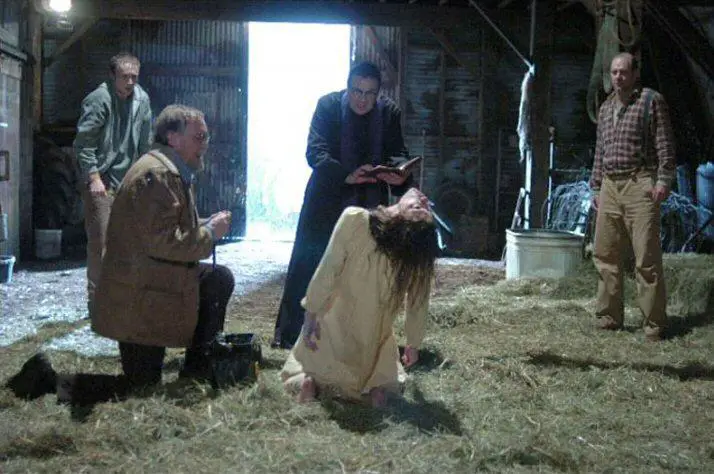
Even in the earliest traces of exorcism in the Christian Bible, it was already made clear that it was possessions that gave rise to the practice of exorcism.
Basically, if there was no possession, then Jesus would not need to expel demons out of humans.
But, if we are to be honest, who among us 一 with “absolute certainty” 一 can say that possessions are real?
Even science argues that the things that make a person appear “possessed” can actually be explained. Most of them mimic the symptoms associated with certain mental and medical conditions 一 including schizophrenia, depression, epilepsy, Tourette’s syndrome, dissociative identity disorder, other personality disorders, and demonomania, in which a person is plagued by the delusion that they are possessed by evil spirits.
Issues like these can cause “unusual or frightening behavior.“
And considering that exorcism harks back to a distant past, where humans only barely understand such things, it might as well be that when people sought answers, they ‘found’ them in exorcism.
But is the practice real?
Truth is, it depends on the perspective from which you view exorcisms. Of course, skeptics would say no, and believers would say yes.
In the end, it is just a matter of which side of the same coin resonates with us better.
References:
Exorcism - Religion Exorcisms: A Brief History Of Banishing Demons Exorcism: The History Of Purging Demons, From The New Testament To Today Exorcisms Have Been Part Of Christianity For Centuries Ancient Babylonian Demon Possession and Exorcism Holy Water in Zoroastrianism Exorcism: Facts And Fiction About Demonic Possession Exorcisms And Psychology: What’s Really Going On?
